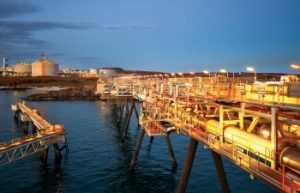 Australia’s oil and gas markets are in for some big changes in 2020. A recent article on abc.net’s website revealed some predictions from BDO, a large global business consulting company.
Australia’s oil and gas markets are in for some big changes in 2020. A recent article on abc.net’s website revealed some predictions from BDO, a large global business consulting company.
The Australian Liquified Natural Gas industry has invested more than $200 billion in infrastructure construction. As the construction boom winds down, the industry now is shifting its focus on production. However, in 2016, that production was hampered when oil prices dropped to a low of $26 a barrel. This resulted in large energy companies such as Santos with their partners taking large write-offs, so share prices plummeted. In Australia, the cost of LNG is directly tied to the cost of oil.
Even though the cost of West Texas Intermediate crude oil has doubled its value to $56 barrel, the global market now has a glut of LNG, so the doubling of oil value has not turned into the same increase in gas. BDO suggests the LNG glut will continue for some time, meaning it’s most likely going to be the new normal for the LNG market. That is emphasized by the fact that renewable energy sources are also on the rise, which will affect LNG prices.
According to BDO, Australia is one of the world’s largest producers of LNG. The industry has found itself able to penetrate more deeply into the South East Asian market because of the uncertainty of the US political system. The gas market is significantly affected by the actions of the current US leadership. Therefore, the time may be right for Australian LNG producers to continue on their path before the change in the US government, namely being able to provide a consistent supply of gas to Asian buyers.
Another change for 2020 could be the production of a pipeline to deliver LNG across Western Australia to support the growing crisis caused by the need of a reliable supply of gas in southeast Australia. Western Australia’s state government has not embraced the idea, but this could become a reality, according to BDO, which thinks that building such a pipeline is an opportunity for both innovation and a solution to gas supply issues.
The new pipeline would tie in with existing pipelines that connect Karratha to Perth and farther to the southwest of Western Australia. This would then connect to the Moomba pipeline in South Australia. Another approach being considered is shipping frozen LNG from the North West Shelf terminal in Karratha to a terminal in the eastern part of Australia, where it would be turned back into LNG and added to the supply there. The pipeline would enhance Australia’s competitiveness.
A new technology that allows tracing gas back to its point of production can soon affect the LNG industry. More countries now are placing requirements for “ethical production” for a number of commodities such as food and textiles. BDO believes it’s only a matter of time before these compliance issues find their way into gas production and distribution.
The development of a UV light-absorbing nano-sized particle called graphene quantum dots allows tracing the oil product, including LNG, back to its origin. This is important to countries that require imported products to be conflict-free and ethically produced. Social and environmental considerations are affecting the energy sectors in Australia, and that translates to financial impacts as well. Such considerations can also have a political impact.
The Australian Tax Office recently won a $300 million fine/settlement from Chevron Gas and Oil. Chevron was fined for using an internal accounting process to shift their profits offshore to avoid taxes. This could be a harbinger of things to come as other international oil and gas companies come under scrutiny for similar practices. The success of the ATO also gives them encouragement to increase their watchfulness on debt funding.
What does all of this mean for the end user of LNG? One thing is for certain, consumers should keep an eye on their energy bills in 2020 as these predictions turn to reality and the market searches for stability under the supply and demand pressures. Australians can visit a website to review various plans and do an energy comparison. The site will help determine the right energy plan for a person’s specific situation. This will be one way a consumer can monitor the rise and fall of energy prices during the uncertainty of 2020.
Shift Frequency © 2019 – The Australian Energy Markets By 2020
